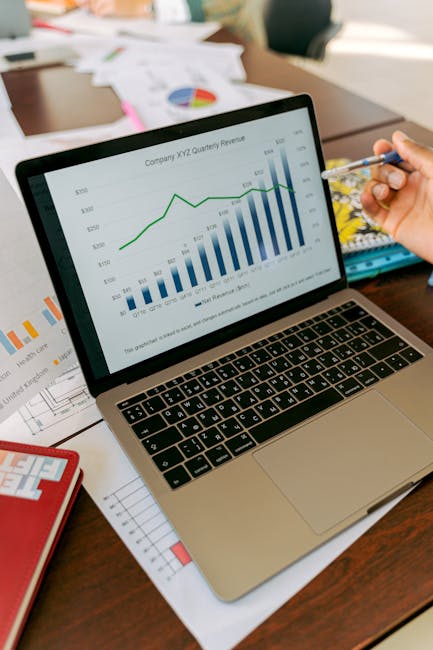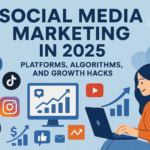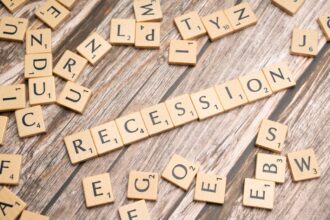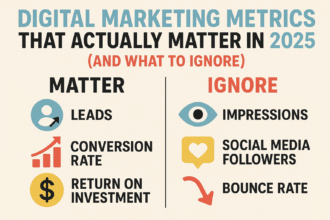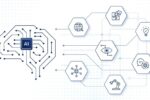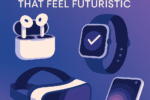The Psychology of Growth: How to Build Products People Can’t Stop Using
Introduction:
In 2025, building a successful product is no longer just about functionality—it’s about understanding the psychology of growth. Businesses that master human behavior, motivation, and user psychology can create products people not only use, but feel compelled to return to. Whether you’re a SaaS startup, an app creator, or an e-commerce entrepreneur, integrating psychological principles into product design can unlock exponential growth. In this article, we’ll explore how companies can leverage behavioral science, habit formation, emotional design, and growth frameworks to build products people can’t stop using.
Understanding the Psychology of Growth
The psychology of growth refers to the study of human motivation, decision-making, and behavior in relation to product adoption and retention. At its core, it’s about answering two questions:
- Why do people start using a product?
- What keeps them coming back?
According to American Psychological Association research, human behavior is driven by a mix of intrinsic motivation (personal satisfaction, curiosity, mastery) and extrinsic motivation (rewards, recognition, convenience). Products that balance both tend to achieve higher engagement rates.
The Science Behind Habit Formation
One of the most powerful psychological drivers of growth is habit formation. In his book Hooked, Nir Eyal describes the Hook Model, which consists of four key stages:
- Trigger: An external or internal cue that initiates user behavior (e.g., notifications, curiosity, boredom).
- Action: The simplest behavior in anticipation of a reward (e.g., scrolling Instagram, clicking a notification).
- Variable Reward: The unpredictable reward that keeps users engaged (likes, comments, recommendations).
- Investment: The effort users put in, which increases their likelihood of returning (uploading photos, customizing a profile).
When applied correctly, this framework helps products shift from being a tool people occasionally use to becoming an essential part of their daily lives.
Emotional Design: Why Feelings Drive Growth
People don’t just use products—they form relationships with them. Emotional design is about crafting experiences that resonate with users’ values and emotions. For instance:
- Apple products appeal to users’ desire for simplicity, elegance, and status.
- Spotify builds emotional connections by curating playlists based on mood and personal taste.
- Duolingo combines humor and gamification to make learning fun and addictive.
A study by Harvard Business Review found that emotionally connected customers are more than twice as valuable as highly satisfied customers. Emotional engagement drives retention, advocacy, and lifetime value.
The Role of Cognitive Biases in Product Growth
Cognitive biases—systematic errors in human thinking—can be powerful tools when applied ethically in product design:
- Social Proof: People are more likely to adopt a product if others are using it. (Example: Reviews on Amazon.)
- Loss Aversion: Users fear losing progress or benefits more than they value gaining them. (Example: Snapchat streaks.)
- Scarcity & Urgency: Limited-time offers increase conversion. (Example: Booking.com’s “Only 2 rooms left.”)
- Endowment Effect: Users value things they’ve invested time in. (Example: Custom playlists, saved items.)
Case Study 1: TikTok’s Explosive Growth
TikTok became one of the most addictive apps by leveraging three core psychological triggers:
- Variable Rewards: An endless feed of unpredictable content keeps dopamine levels high.
- Ease of Use: The swipe interface lowers friction.
- Community & Social Proof: Users feel part of global trends, increasing FOMO (fear of missing out).
As of 2025, TikTok reports over 1.6 billion monthly active users, proving how growth psychology can scale globally.
Case Study 2: Duolingo’s Gamified Learning
Duolingo transformed language learning by applying gamification:
- Daily streaks (loss aversion).
- Leaderboard rankings (social proof).
- XP points and levels (intrinsic motivation).
The app now has over 74 million monthly active users, showing how habit loops and gamification drive long-term engagement.
Designing for Retention vs. Acquisition
Many companies make the mistake of focusing too much on acquisition while neglecting retention. According to Bain & Company, increasing customer retention rates by just 5% can increase profits by 25% to 95%.
Strategies for retention include:
- Personalized onboarding.
- Push notifications that add value, not noise.
- Community-building features.
- Regular feature updates aligned with user feedback.
Product-Led Growth and the Future of Scaling
In 2025, product-led growth (PLG) is a dominant strategy. Instead of relying solely on sales teams, PLG focuses on the product as the main growth driver. Slack, Zoom, and Figma are prime examples.
Key components of PLG include:
- Freemium models that reduce entry barriers.
- Virality loops—users invite others to collaborate.
- Data-driven optimization using product analytics.
By combining psychology with PLG, businesses can achieve scalable, self-sustaining growth.
Best Practices for Building Products People Can’t Stop Using
- Understand your users’ psychological triggers.
- Design habit loops that encourage daily engagement.
- Balance emotional design with utility.
- Use gamification ethically to enhance motivation.
- Leverage data analytics to iterate continuously.
FAQ: The Psychology of Growth in Product Design
1. What is the psychology of growth in product development?
The psychology of growth refers to applying behavioral science, motivation theory, and cognitive psychology to product design. It explains why people start using a product, what keeps them engaged, and how companies can encourage long-term adoption.
2. How do habits influence product growth?
Habits are automatic behaviors triggered by cues. Products that successfully build habit loops—such as TikTok or Duolingo—achieve higher engagement and retention because users integrate them into daily routines.
3. What role does emotional design play in retention?
Emotional design creates connections beyond functionality. When users feel emotionally attached to a product—through joy, pride, or identity—they are more likely to stay loyal and recommend it.
4. How do companies use cognitive biases ethically?
Companies leverage cognitive biases such as social proof, scarcity, or loss aversion to encourage behavior. Ethical application means enhancing user experience rather than manipulating users against their best interest.
5. What’s the future of growth psychology in 2025?
In 2025, AI-driven personalization, product-led growth, and gamification remain critical. Products will increasingly rely on predictive analytics to understand user psychology in real time, creating hyper-personalized experiences.
Conclusion: Building for Growth in 2025
The psychology of growth is no longer a luxury—it’s a necessity for any product aiming to scale. By understanding habit formation, emotional design, cognitive biases, and product-led growth, businesses can create products people can’t stop using. The winners of tomorrow will not only deliver functionality but also master the science of human motivation. The key to growth lies at the intersection of psychology, design, and data.
Call-to-Action: If you’re building a product in 2025, start by asking: “What psychological triggers will keep my users engaged tomorrow?” The answer may be the foundation of your growth journey.
